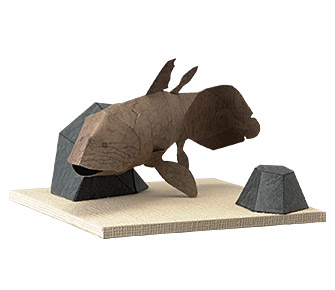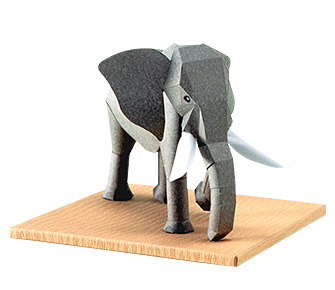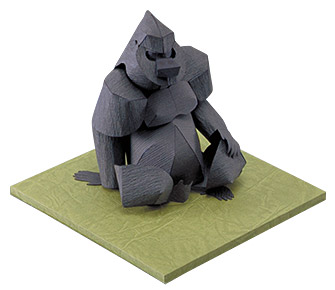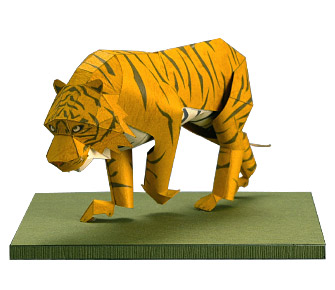Great Indian Rhinoceros
Papercraft kit : The brawny great Indian rhinoceros.
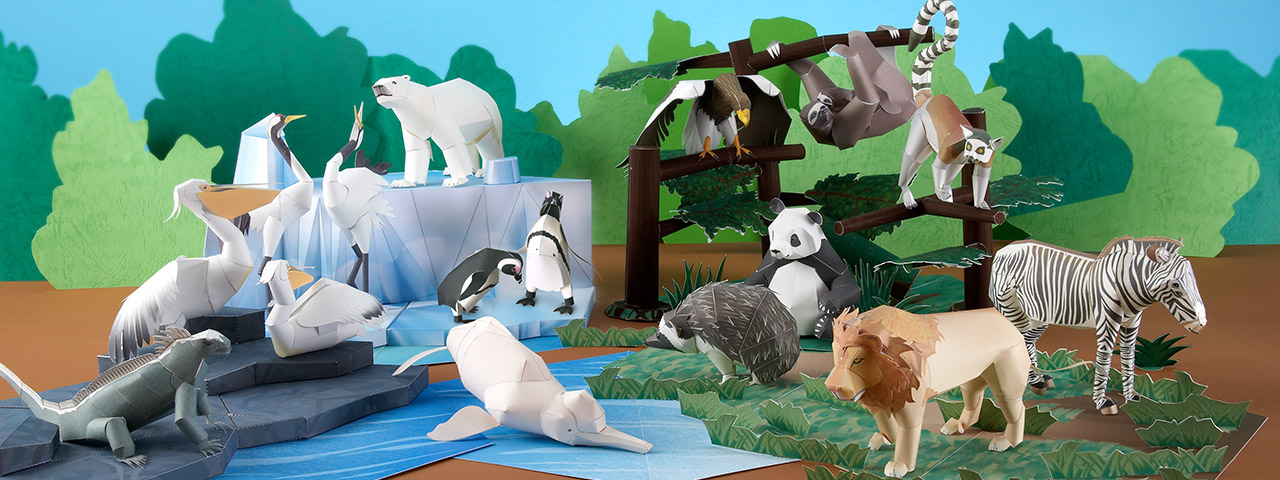
The great Indian rhinoceros is an animal covered with tough armor-like skin. Contrary to its aggressive appearance, the rhinoceros is basically a very gentle-natured herbivore. It is believed that the distinctive single horn of the species inspired the creation of the legendary unicorn. The species is classified as “Vulnerable [VU]” on the Red List.
Assembly instructions for the Paper Craft Model of the hefty rhinoceros, as well as a photo image of a completed model, may be downloaded from this website.
Download - Parts sheet & InstructionsThis data was released in September, 2000.
Great Indian Rhinoceros - Animal Guide

- Great Indian Rhinoceros - Rhinocerotidae
- Rhinoceros unicornis
- Height: 3.5 - 4.2m (11.5 - 13.8 feet) in length / Weight: 1600 - 2000kg (3,524 - 4,405 lbs.)
- 2016 Edition of the RED LIST categories : Vulnerable [VU]
Next to the African white rhinoceros, the great Indian rhinoceros is the second largest species of the rhinocerotidae family. While other species commonly grow two horns composed of hardened skin, both the male and female great Indian rhinoceros possess only a single horn. Therefore, the Indian rhinoceros is known as the “single- horned rhinoceros”. It is believed that the species’ physically unique characteristics inspired the advent of the unicorn of folklore. The Indian rhinoceros’ body is completely covered with hard brownish-gray skin, which resembles plates of armor. The species is sometimes called the “armored rhinoceros”. The creature is also characterized by its folded skin protrusions around its shoulders and rump. In addition, the rhinoceros has a long, pointed, prehensile upper lip, which facilitates the grabbing of branches and grasses, the animal’s main diet. The rhinoceros is generally a solitary animal, living away from its fellows.
The male and female associate only during the estrous cycle. After a gestation period of 15 to 16 months, one offspring is produced.
Habitat
The great Indian rhinoceros inhabits marshy areas and dry forests in India and Nepal.
The species often spends the daytime in the water, preferring to wallow in the water or mud. The great Indian rhinoceros has suffered from the large market for its skin and for its horn, prized as an antipyretic and aphrodisiac. Filling the demand for this market,continuous poaching of the Indian rhinoceros eventually resulted in a drastic decrease in number of the species. Moreover, the deforestation of the species’ habitat due to land development has also contributed to the creature’s endangerment. The great Indian rhinoceros has been gradually increasing under man’s protection since 1966, when approximately 700 to 800 individuals were found in a survey. It is currently presumed that approximately 2,000 of the species exist.

About Red List
The Red List is the material prepared by IUCN (International Union for Conservation of Nature) classifying various threatened wild animals of the world and reporting their present habitat status.
The List evaluates the extinction risk level of each individual species from a biological viewpoint, but it possesses no legal power to enforce regulations concerning threatened species. The Red List is broadly employed as fundamental information in advancing the preservation of threatened wild animals.
Referring to the original Red List, the Environment Agency of Japan has compiled the Japanese edition of the List listing threatened taxa inhabiting Japan.
| Extinct | EX | No known individuals remaining. |
|---|---|---|
| Extinct in the Wild | EW | Known only to survive in captivity, or as a naturalized population outside its historic range. |
| Critically Endangered | CR | Extremely high risk of extinction in the wild. |
| Endangered | EN | High risk of extinction in the wild. |
| Vulnerable | VU | High risk of endangerment in the wild. |
| Near Threatened | NT | Likely to become endangered in the near future. |
| Least Concern | LC | Lowest risk. Does not qualify for a more at-risk category. Widespread and abundant taxa are included in this category. |
| Data Deficient | DD | Not enough data to make an assessment of its risk of extinction. |




